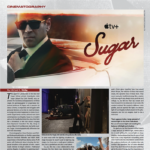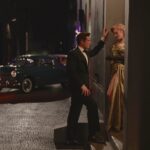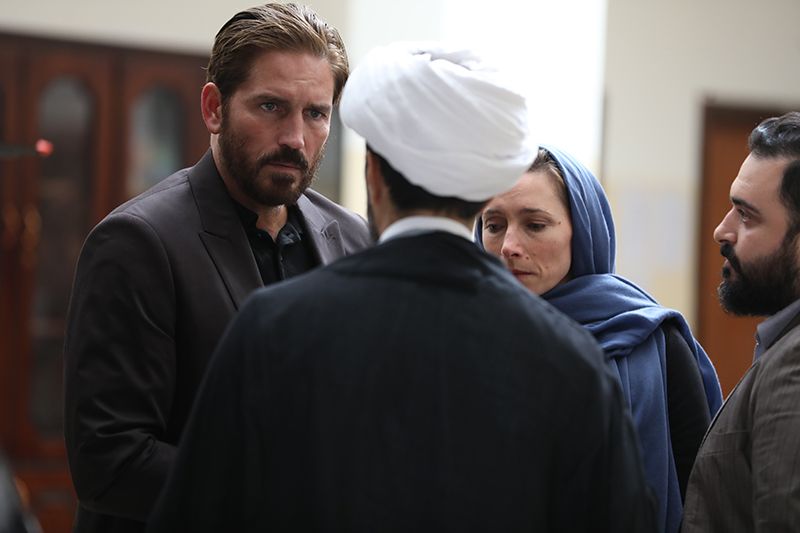
Inside a Captivating Political Thriller
Conventional wisdom dictated any movie released in the time of Covid-19 was a risky venture. Yet a decimated theater business provided the unlikely circumstances that has spelled cinematic success for the film.
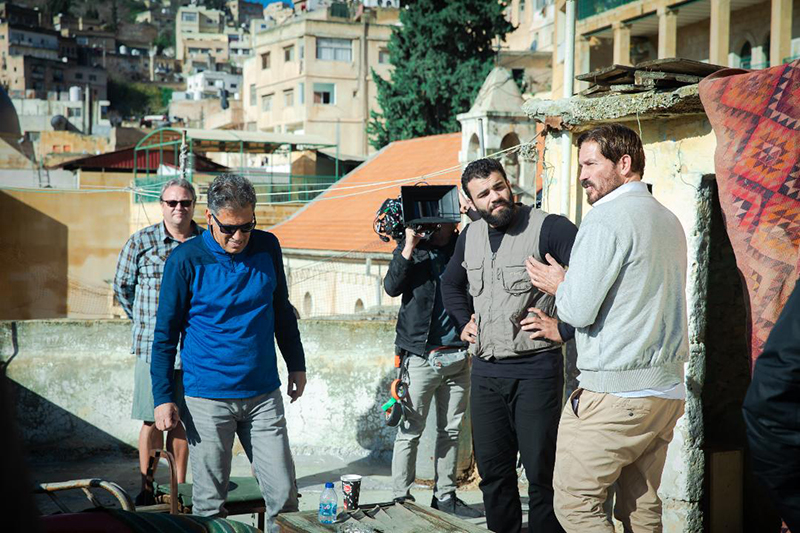
Plot
The movie’s plot follows an American journalist, Doug Rawlins, portrayed by Jim Caviezel, who accepts an invite to discuss his faith at an interfaith conference in Egypt. His wife, Liz (Claudia Karvan), warns him not to take up the offer, but Rawlins heads to Cairo, anyway. After Rawlins proclaims his Christian belief (in no uncertain terms) to a televised audience, he’s kidnapped and beaten by a band of Hezbollah foot soldiers led by Ramzi (Hal Ozsan) and ultimately transported to Iran, where he awaits trial.
Horrified and frightened, Liz appeals to her apathetic employer, the U.S. State Department, only to be told the era of Entebbe raid-like rescues is over. Out of options, Liz flies to the Middle East with the hopes of freeing Doug from certain political execution. With the help of a burgeoning underground Christian movement inside Iran, among other allies, Liz is set to be reunited with Doug. But will she be able to save him in time?
This may seem like a strange basis for an action film, but recent world events bolster the validity of the screenplay written by director/producer Cyrus Nowrasteh. Champion Iranian wrestler Navid Afkari was executed on Sept. 12, 2020, after being arrested (along with his two brothers) and accused of taking part in protests aimed at corruption inside the Iranian regime. Other prisoners suffered a similar fate, including American Robert Levinson, who had been held since 2007 and died in Iranian custody in March 2020.
“I was struck by the fact that Iran was routinely taking Americans hostage, making them captives in Iranian prisons and putting them on trial,” Nowrasteh tells PLSN. “We never really hear about it in the Western media. Or hardly hear about it.”
Infidel confronts realities that ran counter to the PC currents coursing through Hollywood culture — an unspoken set of norms that would no doubt create a tidal wave of barriers for the film’s distribution. Simply put, this was not the type of thriller Tinseltown ordinarily touches with a ten-foot pole, yet it helped carve out a niche for the producers. “I’ve been to Cairo, I’ve lived in Iran, I’ve chased money in the Emirates, and my family is of Islamic origin,” says Nowrasteh. “When you meet someone on the street in the Middle East, one of the first questions you’re asked is, ‘Do you believe in God? What’s your religion?’ None of these Hollywood thrillers deal with that.’”
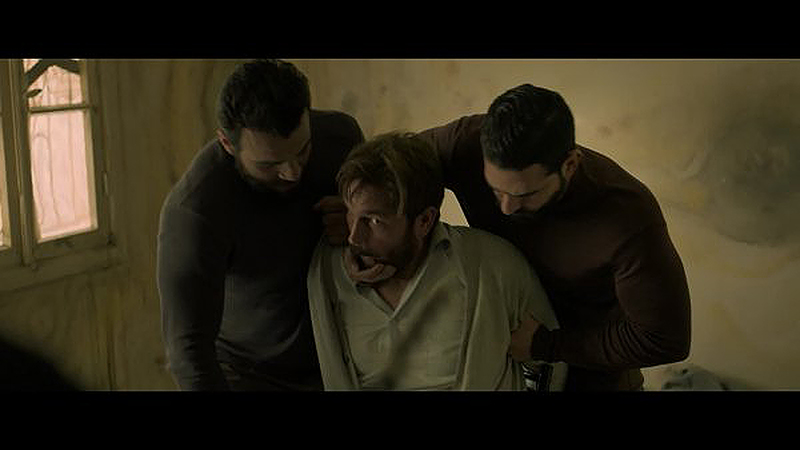
Covid-19 Concerns
Highlighting the hurdles Infidel confronted within the film industry is to ignore the last year. The theater business has been hammered by Covid-19, and releasing an independent film amid this uncertainty was, at best, a calculated risk. A year ago, no one could have predicted some in the business would brand Christopher Nolan’s Tenet a box office disappointment, or that would-be blockbuster Wonder Woman 1984 would have been delayed by months.
Affording an indie a proper theatrical release during a pandemic, ironically, groomed Infidel for its underdog status. Had the world been “normal” in 2020, the film would have seen a limited theatrical run. Instead, conditions on the ground offered moviegoers and struggling theaters fewer options, allowing the film to thrive and rake in box office sales by the millions. In addition, revenues from streaming services, overseas markets, airline showings, and Blu-ray and DVD releases will likely soundly beat its $6 million price tag.
“With independent films, you open, and if you don’t do big numbers, or even if you do big numbers, you’re usually out in two or three weeks, because the big boys are coming in with a tentpole,” says Nowrasteh. “The theaters want those.”
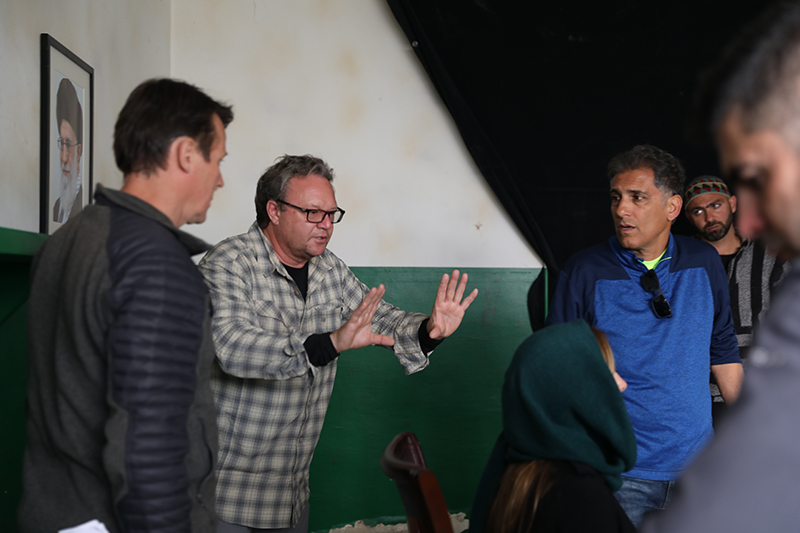
Jordan
Logic dictated that since much of the film is set in Iran, it stood to reason that shooting would begin there. However, when Nowrasteh and cinematographer Joel Ransom worked on 2009’s The Stoning of Soraya M., the Iranian government banned both the filming of the movie and, when it was completed outside the country, banned the completed film as well. “The Stoning was instrumental in bringing about and forcing a moratorium on stoning in Iran,” says Nowrasteh. “I can’t go there now. The Iranian government knew about the film and they formally condemned and banned it and made it a crime to own a copy inside Iran.”
Instead of filming in Iran, the Infidel crew shot the movie in Jordan, where The Stoning was also filmed, to capture the look of the Middle East. Cities such as Amman and Salt became primary locations over the 35-day shoot. “We had four days at the U.S. apartment, the one supposedly in Washington, then for the prison, we had two or more weeks shooting,” says cinematographer Joel Ransom. “We scouted real prisons and then we found an abandoned facility. There was no power or lights in there.”
“We visited some live operating prisons,” says Nowrasteh. “We had to do an explosion and a prison break, so there was no way we could use those. There was an abandoned jail, but on my initial impression I thought it was too small. Then again, my production designer [Marek Dobrowolski] was very inventive. He created a kind of outer gate and sally port when people visit the prison, which gives it the impression of size. We were able to sell that by the way Joel shot it and the way the production design augmented it to make it seem like it was bigger.”
Along with its production concerns, the team also dealt with external strife. While filming at the prison, protests broke out, impacting the shooting schedule. “There was another show shooting there,” says Nowrasteh. “They had created Tel Aviv in Jordan. The politics of the region should have told them [not to do that]. The problem was, the protestors thought our movie was that show.”
“They wanted us gone and everything done,” says Ransom. “Suddenly we had to finish the scene we were working on. ‘What do we do?’ The guys stripped out all the lights outside and wound up sticking Kinos in the windows. Another similar story was when we were in Salt, where we shot the kidnap house. That was a doozy of a place, because you had local businessman coming by and wanting money from the production to ensure a friendly shoot.”
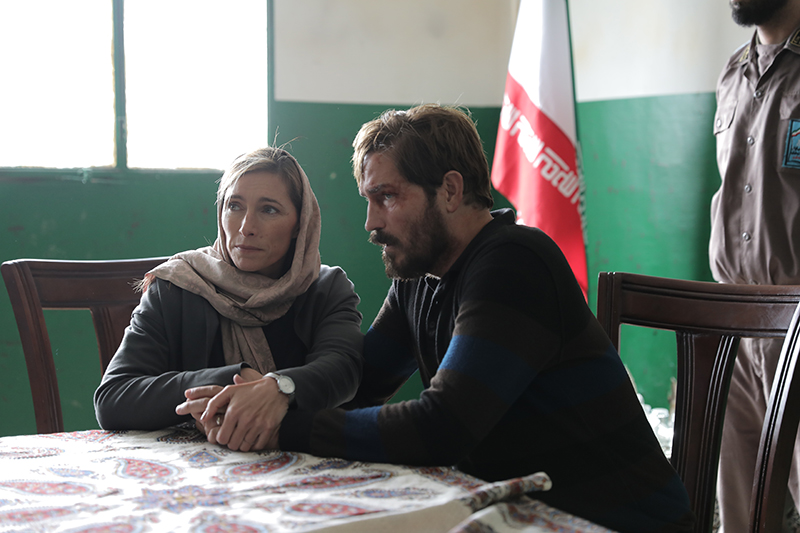
Realistic Look
The documentary-like feel of the movie, something Nowrasteh told PLSN was inspired by Steven Spielberg’s 2005 movie, Munich, captures the dust and heat on the streets of the Middle East. “Joel and I have worked together on The Path to 9/11, which was a lot of handheld [camera work],” says Nowrasteh. “I knew he could do a gritty, realistic look, combined with just a little bit of Hollywood gloss.”
One notable, but tense, scene occurs when Rawlins is on the phone with his wife at the exact moment of his abduction. Ransom needed to capture the cool, bright colors of wintertime Washington, D.C. and contrast those with the darkness and warmth of nighttime Cairo.
“Generally, we wanted to show who was more emotional at the time,” says Ransom, “who was possibly the cooler, more level-headed, character. The DC apartment had a mixture of fluorescent tubes and added some blue to a tungsten light. I did have some digital lights, ARRI SkyPanels, but not many, where you can dial up a color.”
Due to the limitations of the shooting location, the scene made great use of practical lighting. “We are up on the 18th floor, so I couldn’t get a light outside the window,” Ransom says, with a laugh. “So it was a Kino or smaller tungsten light with diffusion [plate] clipped on the [barndoors]. In that hotel room, when Jim is on the phone, out on the balcony, we have light down below him, on a roof top, that we had shining up on him. The only other light I had was lighting the opposing, under-construction, building across the way. Just so you can see it.
“All of the scenes in the hotel were done in one day,” continues Ransom. “That was a busy day. We started in the hotel lobby, then back of the hotel. That was a 14- or 15-hour day. We knew we couldn’t come back.”
The wedding sequence at the opening of the film (depicting relative calm before the storm) featured a softer, warmer glow. “That was shot at the Four Seasons hotel,” says Ransom. “We had to shoot that scene at night. For lighting, all those units would have been all on the ground, nothing in a lift. There was also a lighting fixture in the hotel, composed of globes, and they had a spike of green to them. We didn’t have the proper bulbs and couldn’t change them. Plus, you couldn’t affix anything to the ceiling. It took a bit of work in color timing to get that right.
“We did get lucky on a few things,” Ransom continues. “I never knew each window [in Jordan] would have a metal blind on it. We saved money by being able to close those blinds. When we needed to tent things out and throw blacks down from the ceiling, [we thought] ‘How do we do this? Do we tape inside because we don’t have money for lifts?’ Every building we used had some positives and negatives. Some buildings look nice, but was it right for what we need? ‘How is the boom man going to get in there with the boom? How do I light it?’”
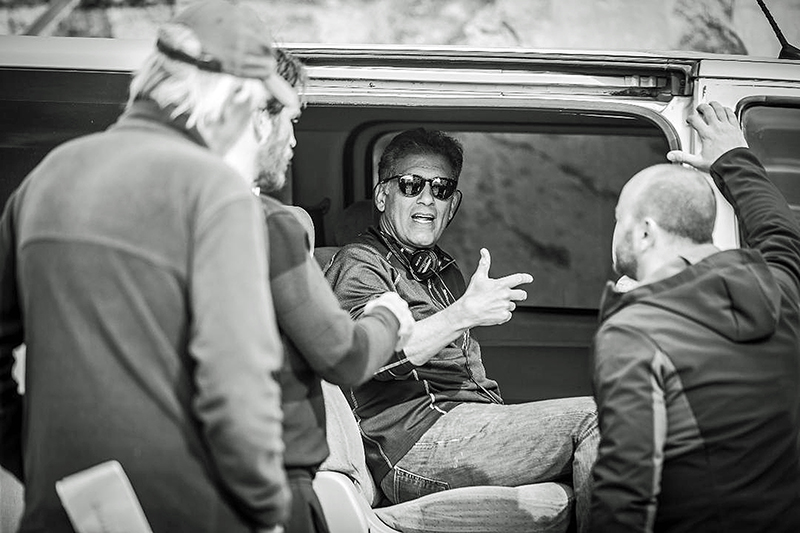
Set on Set
One of the most complicated scenes to shoot was the televised interview, which led to Rawlins’ kidnapping. Quite serendipitously, the producers found an existing, functional studio inside Jordan, complete with lighting, operational cameras, monitors and other gear. The Infidel crew worked efficiently.
“We’re in the console room and we are seeing the monitors, and we are also seeing the audience, and sometimes we are seeing television cameras that are covering [the televised interview] from our motion picture cameras,” says Nowrasteh.
“We wanted every camera in that studio to work, so we could go from our film cameras, shooting it, to intercut the television cameras,” says Ransom.
“The other thing that complicates it editorially is the crosscutting to [Rawlins’] wife in Washington, in her office, watching [on the internet],” says Nowrasteh. “It is morning her time, and she is watching a live feed on a laptop in her office and reacting to it. It is a really brilliantly cut sequence by the primary editor, Paul Seydor, an Academy Award-nominee.”
“We had to do various takes so that we got a shot of every take with a good camera,” says Ransom. “Three or four of their cameras were acceptable to our post-production department. We got to put the cameras in the directing booth with all the different angles and cuts. I am hanging up my own [lighting] for this.”
“I like shooting a lot of angles and having a lot of choices in the cutting room,” says Nowrasteh. “I also feel that actors work better if we’re economic with our coverage. If you are using one camera, we have to do the same bits over and over again. If I’m covering it with two cameras, or if I am doing French Overs, actors like that. They like knowing that we get it, and when we get it, we can move on.
